
The House of Scientists (Vladimir Alexandrovich's Palace) is a historical building resembling Florentine palazzi, located in the center of St. Petersburg, on the most famous Neva embankment - Palace embankment.
Today, concerts, exhibitions, conferences, meetings, events and sightseeing tours of the building's interiors are held in the House of Scientists.
The building is known not only as the house of scientists, but also as the former palace of Grand Duke Vladimir Alexandrovich.
The palace was built by the architect Alexander Ivanovich Rezanov in 1867-1874 (including interior decoration) for Grand Duke Vladimir Alexandrovich, the third son of Emperor Alexander II. The palace was built on the site of a repeatedly rebuilt mansion.
In the palace, in addition to the halls, state reception rooms, private chambers and other rooms, the house church of the Annunciation of the Most Holy Theotokos was located on the upper floor, the walls of which were painted with scenes from the life of St. Prince Vladimir.
Since January 31, 1920, the former palace of Vladimir Alexandrovich has been hosting the Maxim Gorky House of Scientists of the Russian Academy of Sciences - a center for communication and cultural leisure of scientific intelligentsia, opened by the decision of the Petrograd Soviet on the initiative of the Petrograd Commission for Improving the Life of Scientists (chairman Maxim Gorky).
The former palace is a complex of three buildings: the main four-story building of which faces the Neva; the service wing, called the "hofmeistersky", faces Millionnaya Street; in the middle of the courtyard there is a stable building.
The main facade facing the Neva River is made in the style of the Florentine Renaissance without flashy decorations. The rusticated walls are pierced by arched windows, and the extended portico of the main entrance is lined with Bremen sandstone. Above the portico there is a wide balcony, at the corners of which there are bronze griffins.
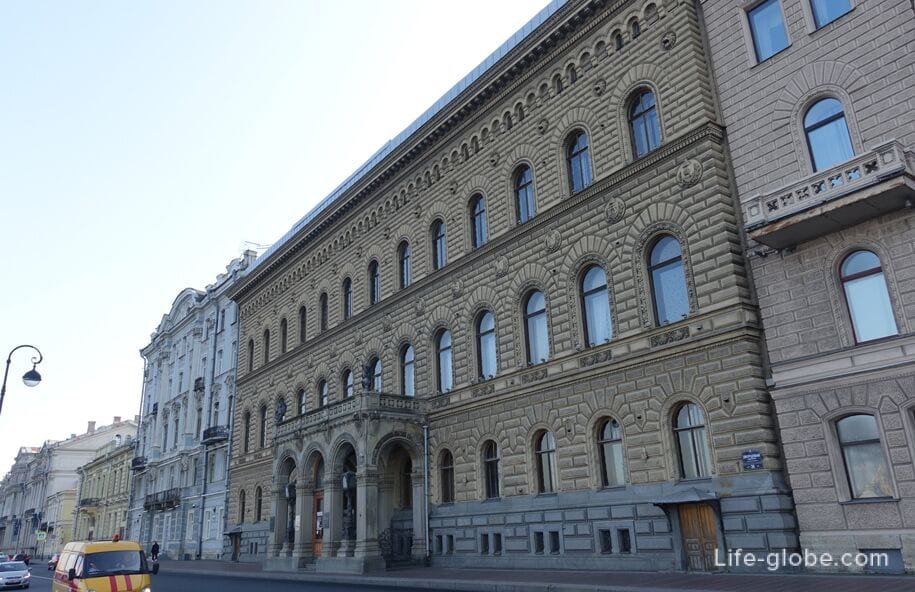
Today, the House of scientists houses restored halls and premises of the former palace, including a concert hall and a library, which is open to visitors, including by appointment.
Concerts, exhibitions, conferences, meetings, events and sightseeing tours of the interiors of the building are held in the house of Scientists: visits to the private apartments of the Grand ducal family and state halls.
Also, in the interiors of the former Grand Ducal Palace, you can hold a corporate evening, celebrate an anniversary, organize a festive concert or conference, hold a wedding photo shoot.
! The official website of the House of Scientists (Palace) is listed at the end of this article.
Photo of the library of the House of Scientists
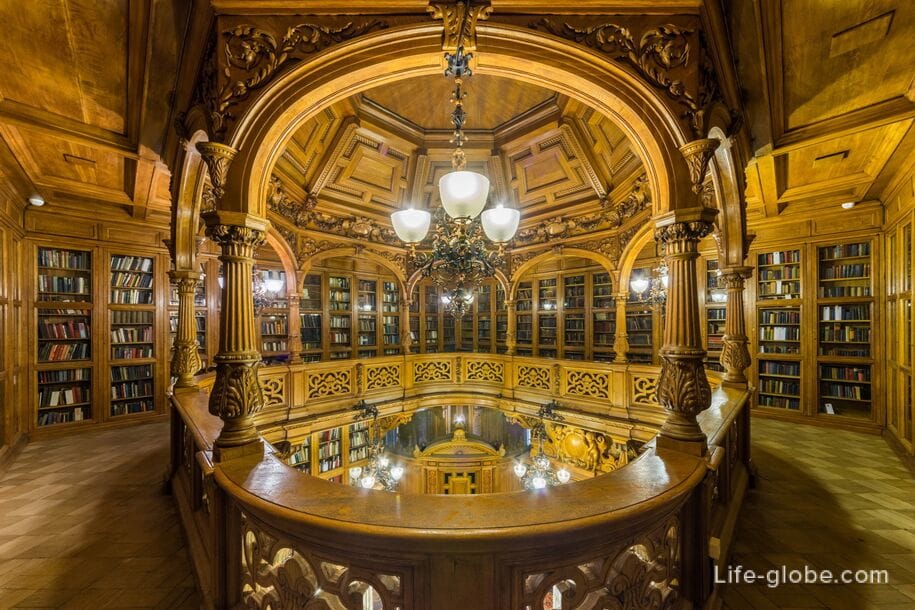
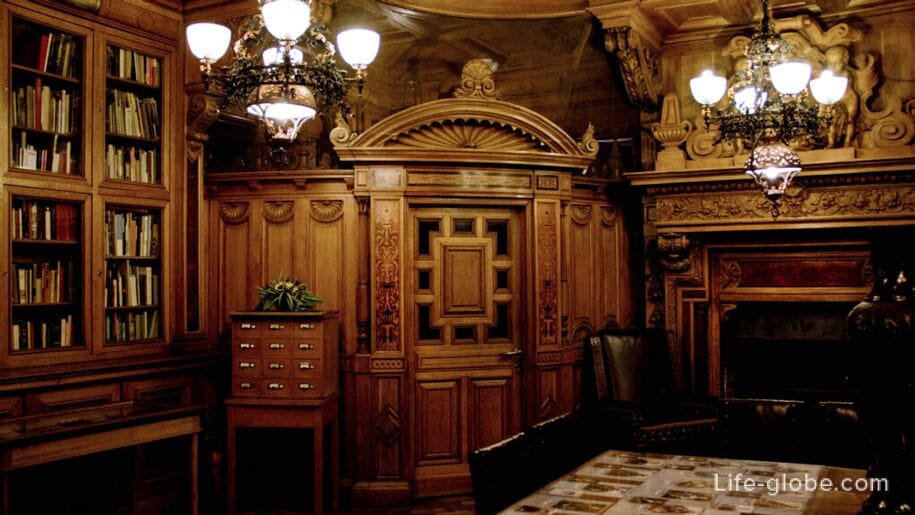
Other interiors of the House of Scientists
The White (dance) Hall is the largest hall in the palace of Vladimir Alexandrovich, which, at the request of the Grand Duke, was made in the style of Louis XV.
The stucco ceiling with gilding is complemented by a plafond by V. P. Vereshchagin "The Triumph of Flora".
The walls of the hall are covered with stucco decoration, sculptural compositions, padugas and mirrors of various sizes. The hall is illuminated by numerous sconces and chandeliers of gilded bronze.
Concerts, receptions and other events are held in the hall.

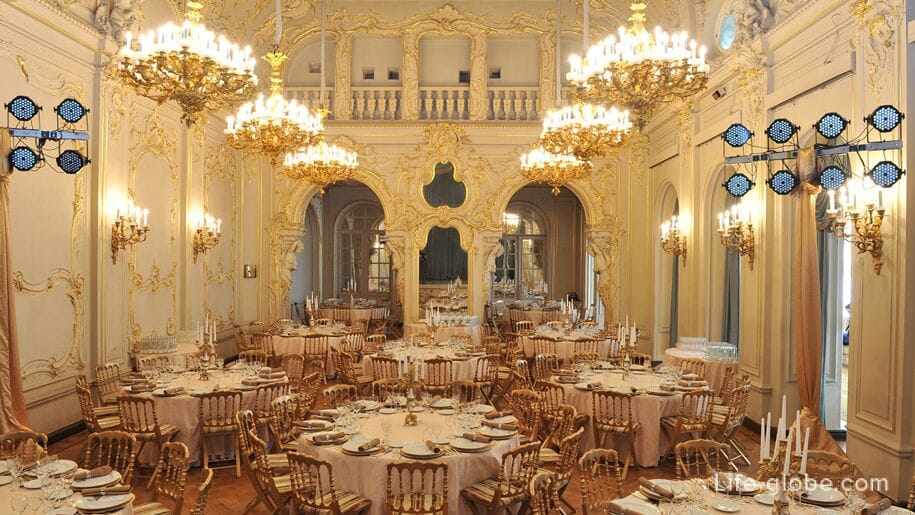
The oak hall is decorated in the neo-Russian style.
In the hall, many details of the decor remind of the patterns of carved wooden huts and peasant embroidery. The walls and ceiling of the hall are covered with stucco, imitating oak carving, which is why the hall was called "Oak".
The hall is also decorated with 5 paintings by the artist V. P. Vereshchagin. Another decoration of the hall is a Russian oven made of polychrome tiles made by the master ceramist L. Bonafede. Of particular interest and uniqueness are the chandeliers made of red copper in the workshop of I. Betz, imitating birch bark.
Concerts, receptions and other events are held in the hall.
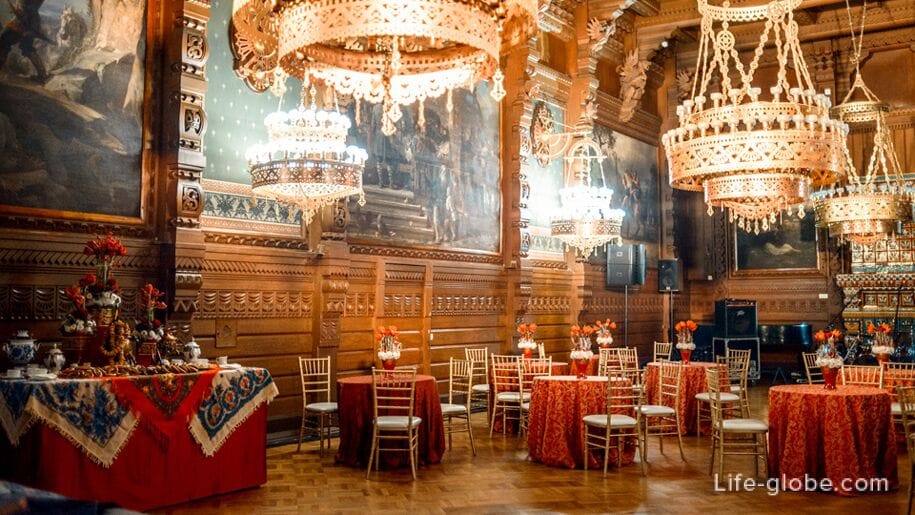
Small Lecture Hall (Small dining room)which in 1911 was finished anew by order of the Grand Duchess: a wooden carved "ceiling from the architect Boulanger from Paris", the stained glass windows were replaced with ordinary glass.
The dining room was designed for a small number of guests. In its center there was a table for 24 people. In this room, family lunches and dinners with close friends were held, so-called "Soviet breakfasts"were arranged.
The small dining room is still decorated with a marble fireplace, over which a portrait of the Grand Duke by K. Makovsky hung in the 1910s, carved sideboards where highly artistic objects from silver and porcelain sets were previously stored, six armchairs with folding seats and a gilded bronze chandelier.
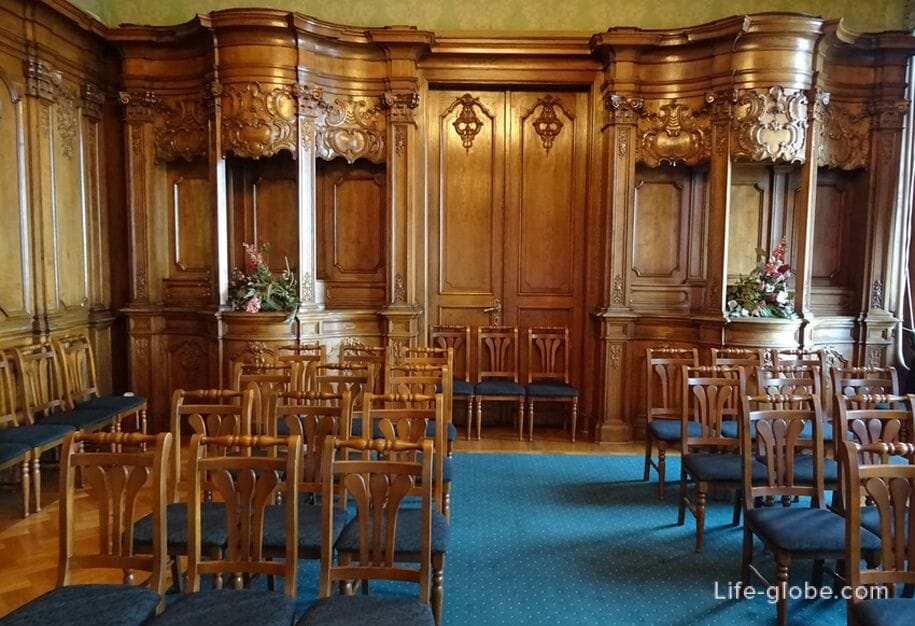
Crimson living room, from which there is an exit to the balcony facing the Neva.
This living room was decorated in the style of the Italian Renaissance. Then the crimson color was highly approved as the court color of the court of Grand Duke Vladimir Alexandrovich.
Relatives and friends of the grand ducal family often gathered in this living room, famous singers and musicians performed here.
The living room is decorated with three large mirrors with marble floors, round tables with marble tops and a carved gilded furniture set, upholstered, like the walls of the hall, with a crimson fabric.
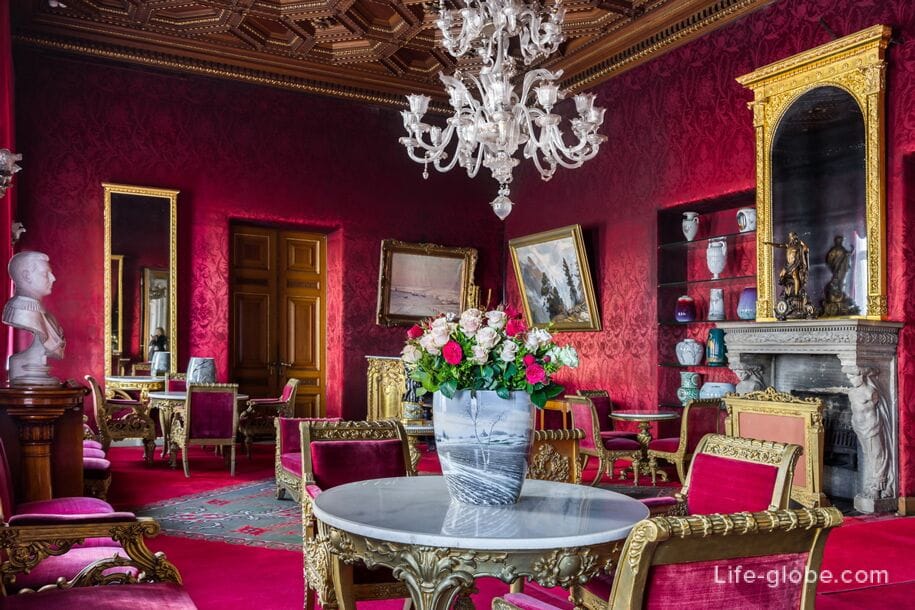
The golden livingroom, which used to be called blue because of the color of the silk upholstery that decorated the walls.
The living room is decorated in the style of Louis XVI.
The decoration of the Golden Living Room is a miraculously preserved vase of the Meissen porcelain factory, made according to the model of Kendler, a gift from Grand Duke Friedrich Franz II for the wedding of Maria Pavlovna and Vladimir Alexandrovich.
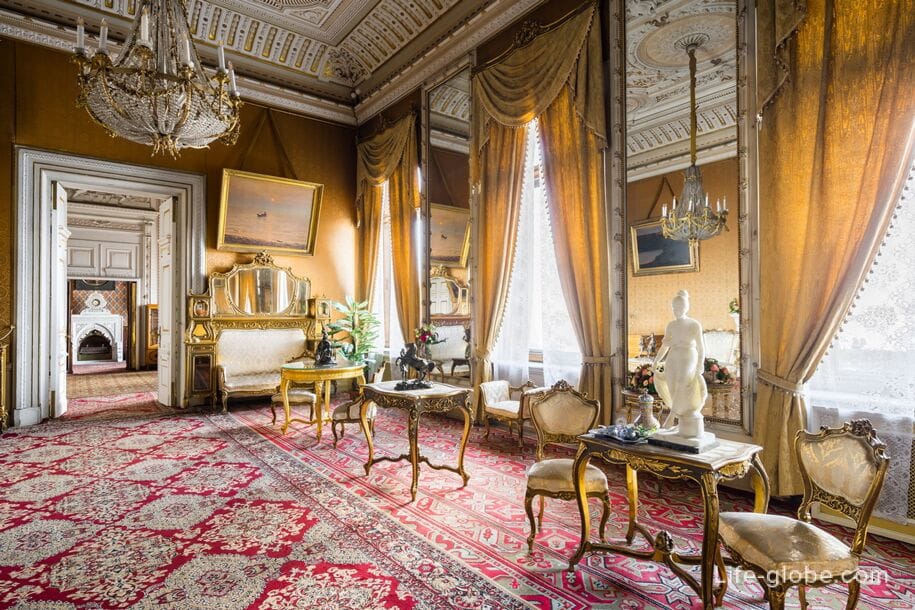
The Moorish Boudoir is the boudoir of the Grand Duchess, which was decorated based on the Alhambra Palace in Grenada. This room evokes associations with a rich oriental casket and invariably leads to the admiration of visitors to the palace.
In the niche, to the left of the entrance to the room, there are low sofas that were upholstered in oriental fabric.
The furniture of the boudoir is covered with gilded stucco decorations and painted with bright colors. The fireplace, located opposite the entrance to the boudoir, is made of Italian marble designed by M. Mesmacher in the workshop of E. Ruggia and S. Maderni. Above the fireplace is a portrait of Grand Duchess Elena by V. Izmailovich.
An inconspicuous door on the left side of the room leads to a stone staircase that connects all the floors of the former palace.

The green Drawing room is the former bedchamber of Maria Pavlovna, with which an interesting story is connected. It is believed that, thanks to the help of the courier of the British Ministry of Foreign Affairs, Albert Stopford, after the revolution, it was possible to remove the jewels from the hiding place in the princess's bedchamber and send them abroad. According to the will of Maria Pavlovna, after her death, these jewels were divided among the children. The most famous jewel - the Vladimir tiara, decorated with large pearls, was purchased in 1921 by the wife of King George V of England, Maria.
Paintings made in the grisaille technique are placed above the fireplace, on the walls and in the duceports of the living room. Both they and a copy of the painting by B. Murillo "Rest on the way to Egypt" were made by the artist V. Izmailovich.
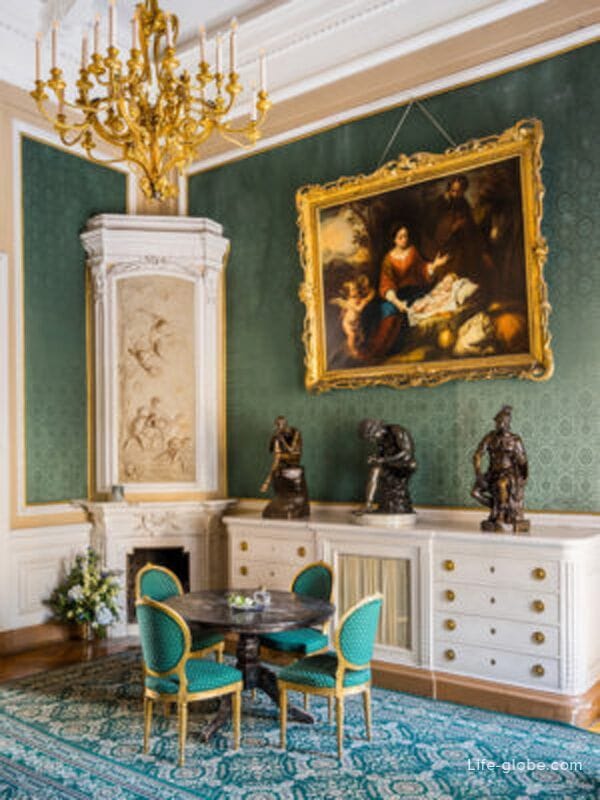
A grand marble staircasethat leads to the second floor to the main halls.
The staircase is made of" second-class Carrara marble " in the workshop on the Fontanka Embankment by Italian sculptors E. Ruggia and C. Maderni.
The staircase impresses with its refined form and rich decoration in the style of the French Renaissance of the 16th century. Marble railings are decorated with interlacing monograms of Vladimir Alexandrovich with floral ornaments and griffins, elements of the Romanov family coat of arms.
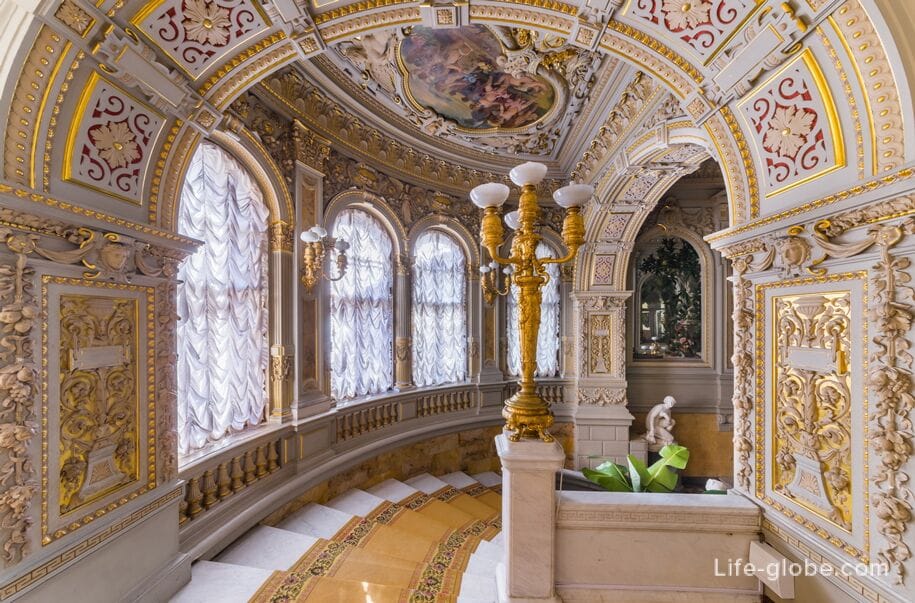
The former palace also has a Winter Garden, where a fountain and a washbasin were installed, ordered by the Grand Duchess in 1913 in Italy.
In the garden there are also: furniture, a mirror set in an intricate oval carved frame, and antique armchairs with high backs, in the drawing of which the monograms of Grand Duke Vladimir Alexandrovich are included.
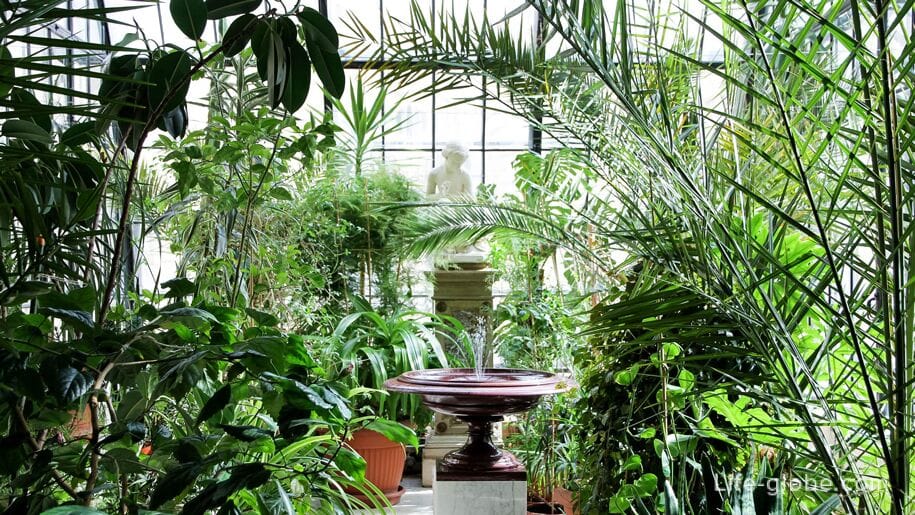
The House of Scientists (Vladimir Alexandrovich's Palace) is located in the heart of St. Petersburg, near the Winter Palace and Palace Square, at the address: Palace Embankment, 26.
Coordinates of the House of Scientists (Vladimir Alexandrovich's Palace): 59°56'36.0"N 30°19'10.0"E (59.943333, 30.319444).
You can find out the opening hours of the House of Scientists, the poster of exhibitions, concerts and other events, as well as buy a ticket for a tour of the palace and clarify other information on the official website: house of scientists.
Nearest metro stations: "Admiralteiskaya", "Gostiny Dvor" and "Nevsky Prospekt".
All accommodation facilities in St. Petersburg, including in the city center and more remotely from it, can be viewed and booked here